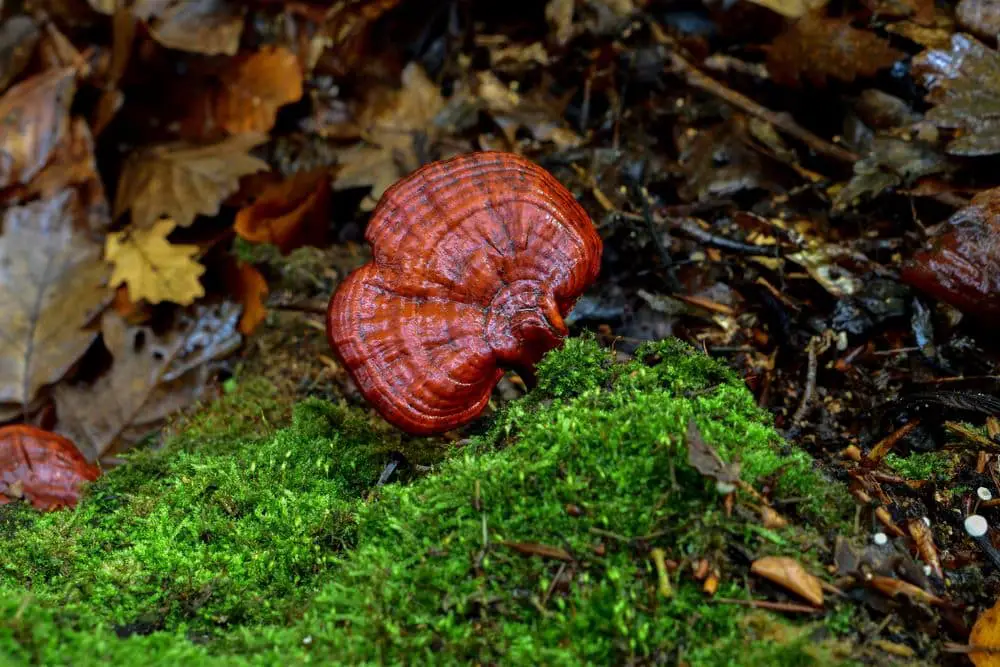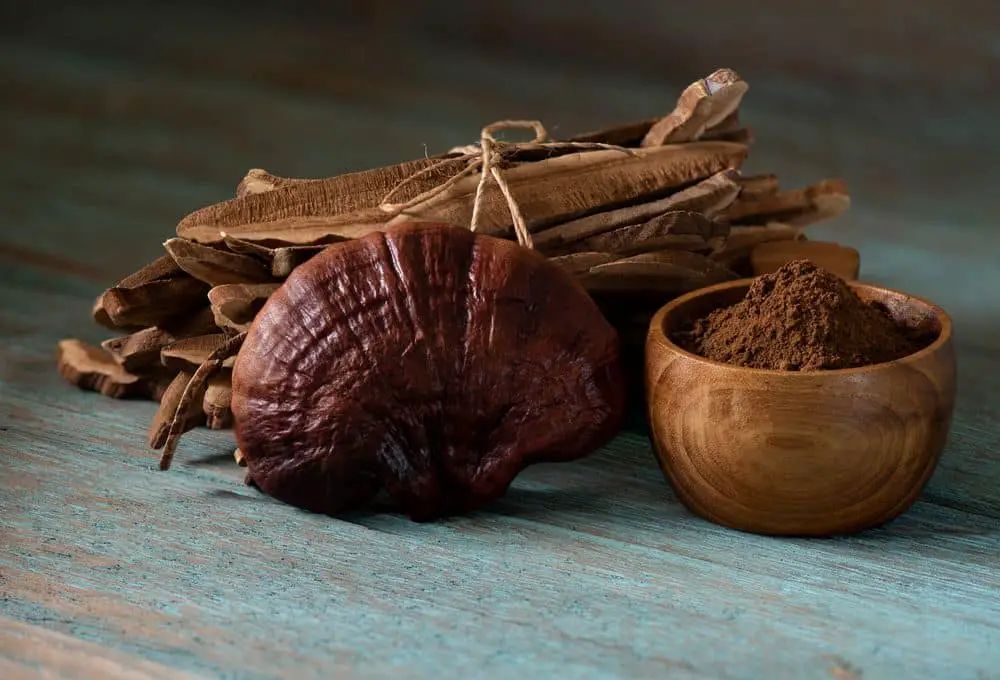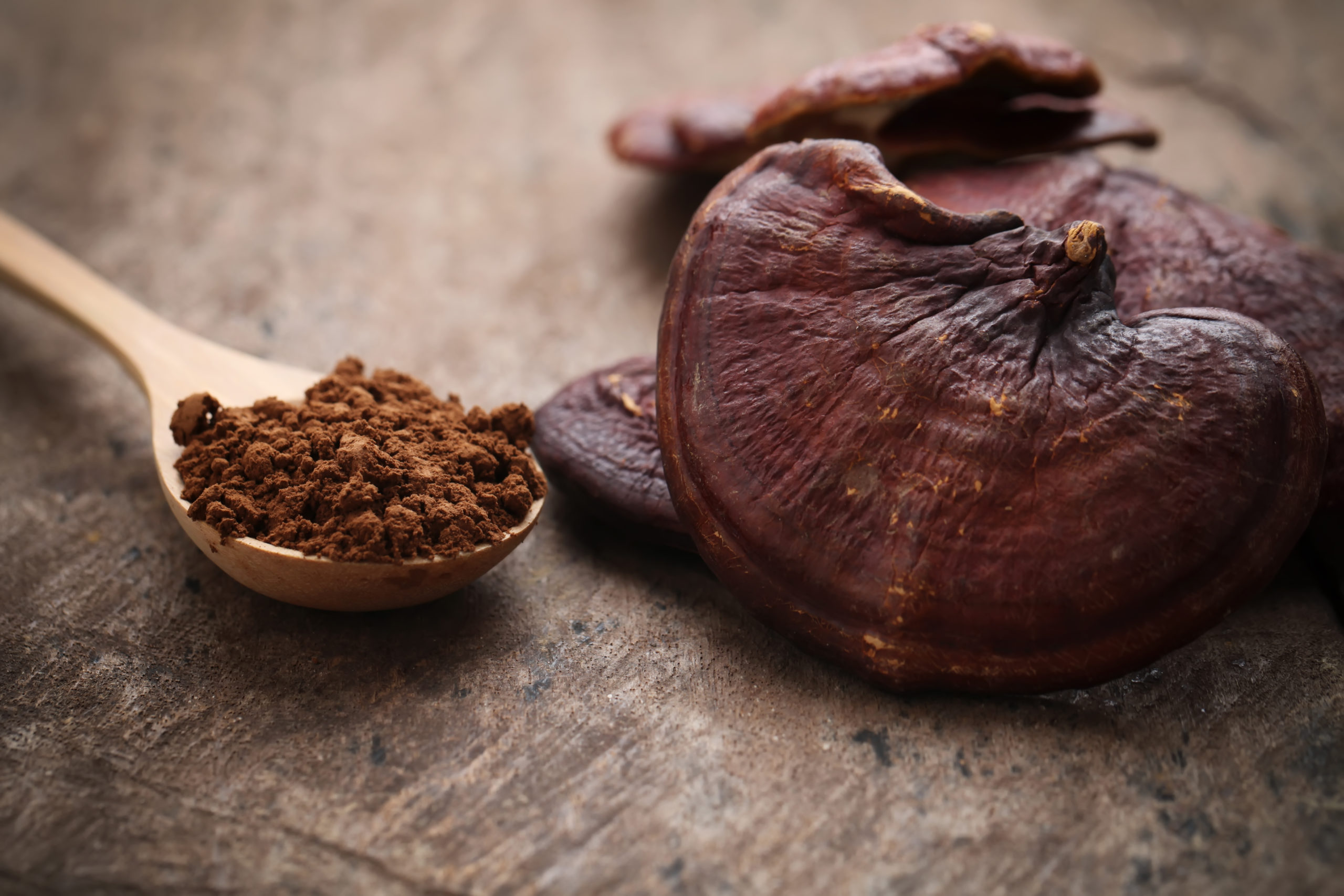The reishi mushroom is known as a popular superfood containing many health benefits. Reishi mushrooms get spoiled fast after being harvested. Thus, they need to be promptly dried. They are best consumed dried instead of fresh.
How to Dry Reishi Mushrooms
The quickest way to dry Reishi Mushrooms is with a food dehydrator. You can also use an oven to dry them out, setting them at the lowest temperature. Or, you can dry them naturally – without a dehydrator. Just air dry them. Put them in an open container – they need good airflow under them (a mesh colander works) – and leave them for about a week to dry. When dried, store in an airtight container in a cool, dark place.
Reishi mushrooms are one of the most potent medicinal mushrooms. They have been used for many varying purposes for thousands of years.
For many years the reishi mushroom has been known as the “king of mushrooms” by Chinese medicine practitioners. It is no wonder that many of the healthy tea extracts and food supplements contain reishi mushrooms.
Teas and extracts can be made using fresh reishi mushrooms immediately after harvest. Teas and extracts, though, are better and more conveniently made with dried reishi mushrooms. Most people who make teas and extracts today use dried reishi mushrooms.

Reishi mushrooms are more practical when dried in large quantities immediately after harvest. This extends the shelf life of the mushrooms and can be left to make something such as teas and extracts after the harvest period.
You do not need any special equipment to dry reishi mushrooms, although some use a food dehydrator or an oven.
Using a dehydrator, though, will dry the reishi mushrooms quicker and more uniformly. Drying the reishi mushrooms in an oven at the lowest temperature can also dry them out quickly.
It may sound funny, but you can dry your reishi mushrooms through solar dehydrating by placing them on the dashboard of your car. Of course, you will need to put something under the mushrooms to prevent any damage to your dashboard.
The best way to dry reishi mushrooms, though, is to dry them naturally.
1. Prepare an open container such as a mesh colander or a small box with holes. Make sure it has good airflow underneath for proper ventilation. You can also opt to hang the reishi mushroom strips on a string.
2. Chop the reishi mushrooms into strips about an inch wide and 6 inches long or in any size you wish.
3. Place the reishi mushrooms on the container a little bit apart from each other. This is to ensure that even the sides of the mushrooms dry.
4. Place the open container with reishi mushrooms in an open space.
5. Allow the reishi mushrooms to air dry for about a week.
Your reishi mushrooms are all dried up when they are dry to the touch. You can also squeeze the mushrooms. When they do not get smashed when you squish them and feel like light rocks, they all dried up.
Why do you need to Dry Reishi Mushrooms?
Reishi mushrooms are tough when fresh but are less potent when consumed. To enjoy them, you will need to dry them shortly after harvesting. You will, therefore, need to know how to dry reishi mushrooms.
Reishi mushrooms are packed with many health benefits. However, you cannot add fresh reishi mushroom to your dish, in the same manner you would with oyster or shiitake mushrooms.
Tough and woody when fresh, Reishi mushrooms need to be dried before you can use them in your cooking.
Reishi mushrooms spoil quickly after harvest. They will keep refrigerated in a paper bag for about 3-5 days.
They will last longer when you cut them into strips and allow them to dry. Once dried, store your reishi mushrooms in an airtight container away from direct sunlight.
How to dry reishi mushrooms is not a complicated process. But first, you need to know how to harvest them.
What Are Reishi Mushrooms?
Reishi mushrooms are known by their many names. Its scientific name is Ganoderma lingzhi. In Asia, the reishi mushroom is called lingzhi – mushroom of immortality – herb of spiritual potency, and – ten thousand year mushrooms.
In North America, they are called – varnish shelf mushrooms – and – artists conk.
There are about 80 species of reishi mushrooms. All are bracket or shelf fungi, and they all grow on trees. Reishi mushrooms look a bit different in climates and other regions.
It is easy to identify a reishi mushroom because they have a unique appearance. A reishi mushroom comes with a dark red body that lightens to yellow, orange, and white towards the edge of the cap.
While all species of reishi mushrooms look different, they have mostly the same medicinal properties and potency.
All species of reishi mushrooms grow on dying or dead trees. They continue to grow every year until the wood completely rots away.
If you see reishi mushrooms on a particular stump or log, you can continuously harvest them every year until they have consumed the wood substrate altogether.
How to Harvest Reishi Mushrooms
When harvesting reishi mushrooms, pick the ones with white undersides because they are fresh ones. Underneath fresh reishi mushrooms, there can be harmful molds that happen when damaged, bruised, or are already past their prime.
Reishi mushrooms should be quickly preserved or dried because they can easily get damaged or bruised during harvest.
Growing from their host log horizontally with a very short or sometimes non-existent stem, they have an unpleasant woodsy scent. The smell is similar to decomposing leaf mulch.
Spores come out from the bottom of the reishi mushroom, and on the logs, they are growing.
The mushrooms appear on top of each other so you find to see the spores coming out from the upper mushrooms all over the caps of the reishi mushrooms below. The spores are brown in all reishi mushroom species.
Reishi mushrooms ready for harvest is about 1 inch to 1 foot wide and about 2 inches thick. More commonly, they will be about 4 to 6 inches in width and ½ inch thick.
The new growth of reishi mushrooms is white and slowly changes to red-orange. Young mushrooms are often in white as they come out from the wood and rapidly grow.
As this type of reishi mushroom matures, the bright cap turns dull, becoming more leathery.
Reishi mushrooms typically grow at the base of the tree, almost near the ground. They can also develop around nearby plants.
Before harvesting reishi mushrooms, make sure they did not grow around toxic plants.
Poison ivy can sometimes grow near trees with reishi mushrooms. Also, ensure that the reishi mushroom is young. A young reishi mushroom has a white pore surface on its underside.
You can use a knife to cut softer reishi mushrooms, gently pulling them from their host tree.
The harvest season for reishi mushrooms is typically around the summer solstice or when the sun is at the highest point in the sky. Harvest reishi mushrooms during this time before slugs eat them.
How to Store Dried Reishi Mushrooms
Place your dried reishi in an airtight container and store them in a cool, dry, and dark place. Direct sunlight should not hit the container.
This drying and storing process will allow your reishi mushrooms to last for up to 2 years.
Make sure to store your dried mushrooms below 1400F to preserve their nutritional value and potency if used for medicinal purposes
You can further extend the shelf life of your reishi mushrooms by adding an oxygen absorber or desiccant to the container. This will absorb any residual moisture present in the container.
Any eggs that insects may have deposited during the drying process can also be effectively killed at this temperature.
Some people place silica packets with the reishi mushrooms in airtight containers. This is to make sure that the mushrooms remain dry to prevent molds from getting into them.
Molds tend to get into the reishi mushrooms when they become damp after the drying process.
You can also opt to freeze the dried reishi mushrooms. Freezing can prevent long-term storage issues.
Where Can You Use Dried Reishi Mushrooms?
It is surprising to learn that reishi mushrooms are more potent when consumed dried rather than fresh. If you want to take advantage of the many health benefits of reishi mushrooms in their most concentrated form, you need to learn how to dry them.

Reishi mushrooms are commonly available in tea, powder, or extract form. Dried reishi mushrooms are, however, ten times more potent than when consumed fresh.
While nature does not typically work this way, research by The National Center of Biodiversity Information of the National Library of Medicine showed that dried reishi mushrooms were more potent than fresh reishi mushrooms.
showed that dried reishi mushrooms were more potent than fresh reishi mushrooms.
You can add dried reishi mushrooms to dishes such as vegetable rice and even porridge. You can also stir fry these mushrooms.
You could also add dried reishi mushrooms to other infusions. Why don’t you try adding dried reishi mushrooms and yogurt to your smoothie?
Final Thoughts on How to Dry Reishi Mushroom (5 Simple Steps)
For thousands of years, Reishni mushrooms have been around and have been effectively used in Chinese medicine.
The health benefits have been proven to cure and prevent many illnesses and they are also recognized for their antioxidant, brightening, and anti-aging properties.
They help to support your body’s natural immune purposes plus its response to inflammation.
Most interestingly, they can help with your skin’s elasticity and potentially reduce fine lines.
Reishi mushrooms are today the most popular mushroom species used in teas, extracts, and food supplements and we hear that popularity is rapidly growing!
Read More:
Why are Mushrooms Growing in My Vegetable Garden?

